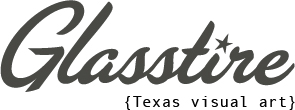Michael Frank Blair reviews a show of inventive landscape paintings by artist Jim Woodson, on view at Valley House Gallery in Dallas.
Michael Frank Blair
-
-
Reus creates immaculate, highly designed things that are complicated in their beauty and their teleology, mirroring the built environments that most modern, industrialized humans inhabit.
-
The big, bulky, striped canvases we know of his from the Modern’s own collection are given some backstory here, starting with Scully’s early attempts to generate space by weaving grids of colored bands, and ticking through five decades of paintings, pastels, prints, drawings and paint sketches.
-
The work pivots on carefully planned silliness and deceptively poor craft, and this balance of thoughtful and careless gives them an edge.
-
This is the gallery’s first solo showing of the Denton-based artist, though her neon and kinetic installations have been widely exhibited in the region and beyond.
-
Everything is made of the same matter and light. This is elemental painting.
-
The show's theme serves as a curatorial excuse for presenting new and compelling work together in the same room — and sometimes an excuse is all one needs.
-
The obvious connection between Larkey's formal play and language are the echoes of text — the line from written language rerouted into sensory objects
-
Hidden in Bradford's cavalier brushwork are wise and focused decisions.
-
Fung's work is full of the contradictions of nature + technology.
-
Vernon's paintings accumulate and resolve, but are always trying something, risking something, asking something.
-
Florentin wants to unfix hard distintions between human activity and earth’s own projects: i.e. nature and culture.
-
Blackburn picks up the language of mechanized images, and folds it back into the deliberate and mindful practice of painting
-
The show begins to tell the story of Modernism in a new way, and it's one we all would benefit from knowing.
-
Three of the many gallery shows that opened in Dallas last month feature locally based artists who work with photography in ways that converge on painting and sculpture.
-
What’s made Frank Stella a household name many times over isn’t necessarily what makes him important.
-
There is so much distance between the objects and their referents. Zefeldt paints that distance into punchlines.
-
Valderas' signs wield cultural vernacular as armor in an aesthetic skirmish. They’re here to provoke.
-
Salavon recognizes that when culture feeds itself into large reservoirs of data, there’s a host of new, wonderful and terrible things we can do with it.
-
Through this snapshot of his oeuvre to date, Falsetta’s trajectory feels much like his paintings: a mixture of planned and spontaneous moves.

